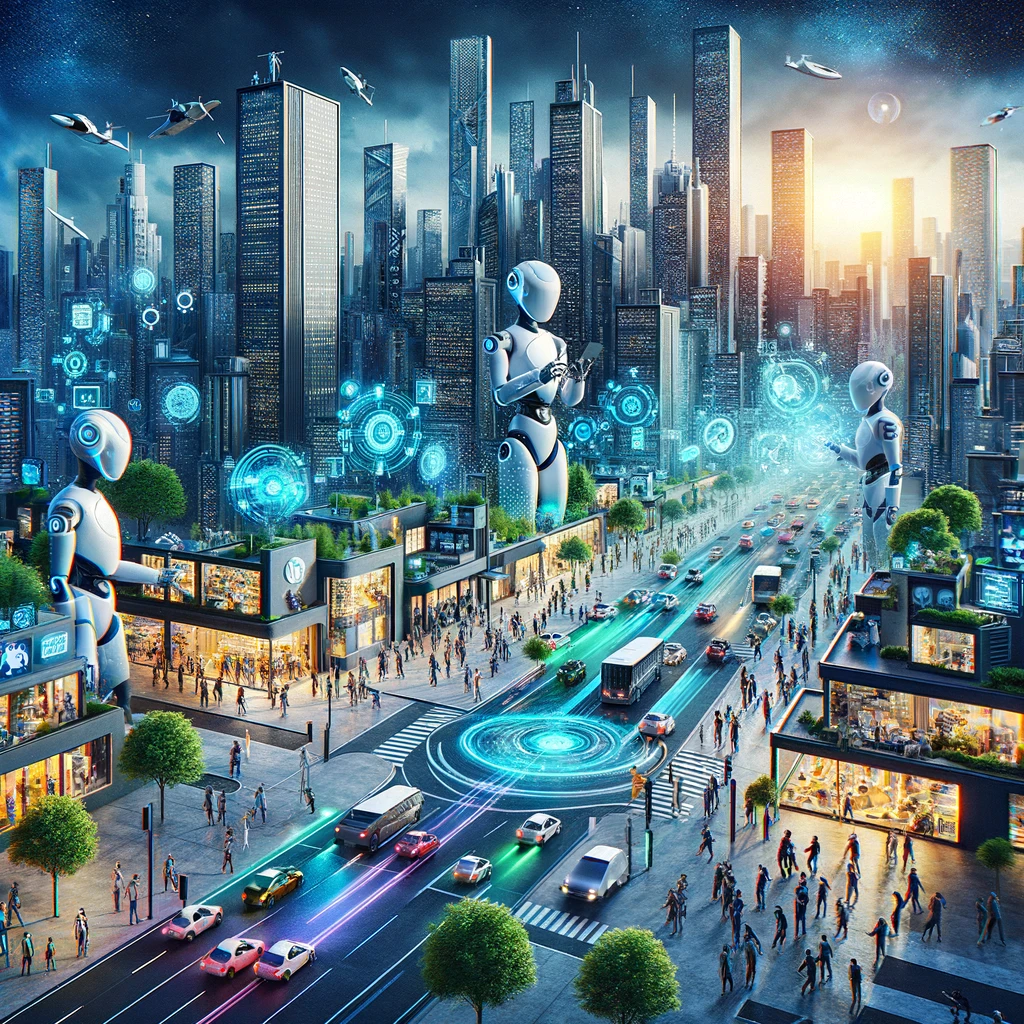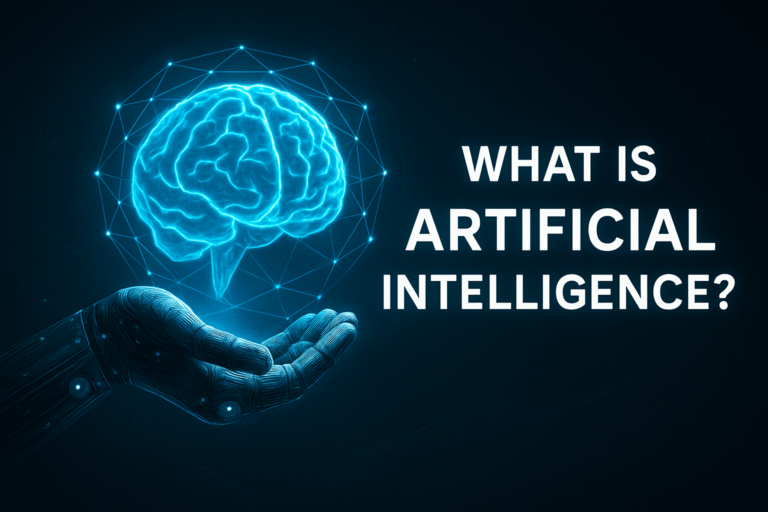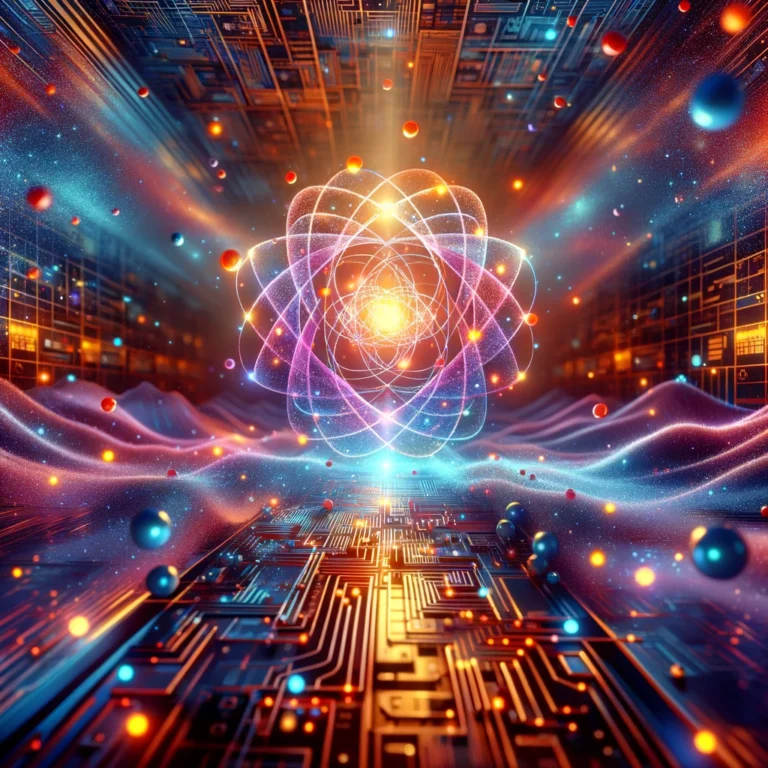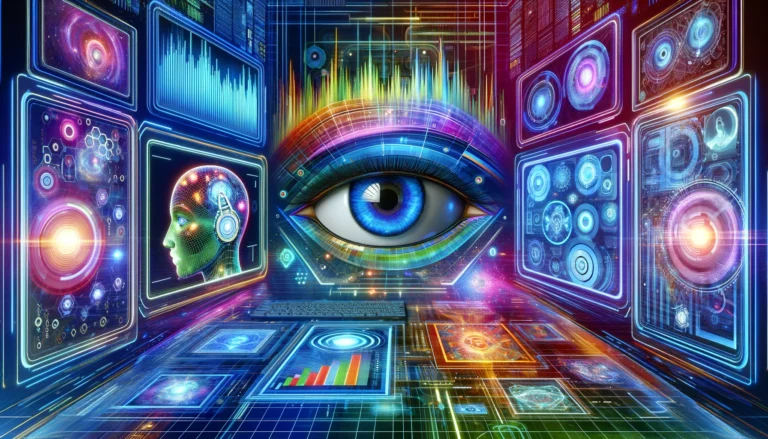Incredible Ways AI in Robotics is Revolutionizing Automation
Artificial Intelligence (AI) in robotics combines mechanical engineering, cognitive science, and computational algorithms to create smart machines.
These machines can perform tasks with a level of autonomy and intelligence similar to humans.
This integration has advanced robotics from simple, programmable devices to complex systems that can learn, adapt, and make real-time decisions.
This introduction explains what AI in robotics is and why combining AI with robotics is so significant, marking a pivotal shift in technology and its applications across various sectors.
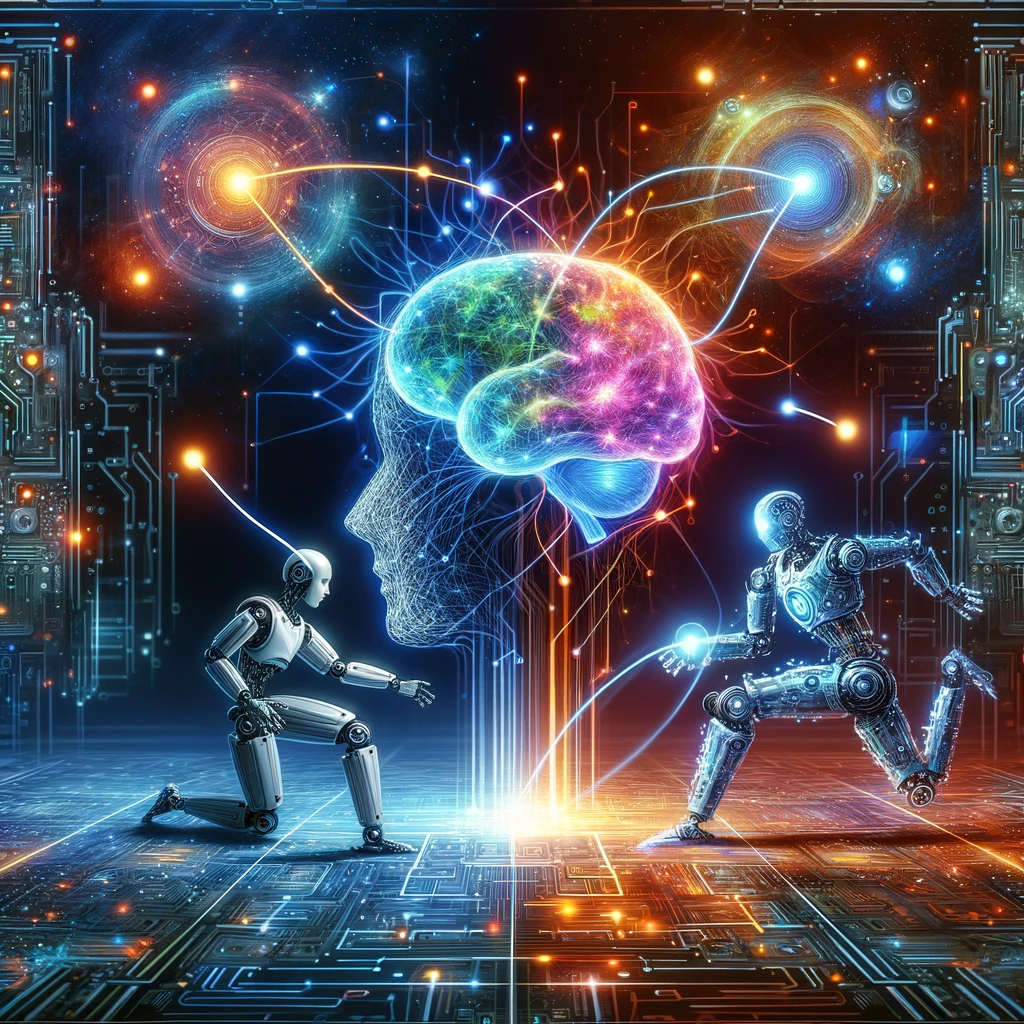
1. How Ai is Used in Robotics
AI in robotics means adding intelligent algorithms to robots.
These smart robots can process information from their environment, make decisions based on it, and act independently or with minimal human help.
With AI, robots can understand their surroundings, learn from experiences, and solve complex problems, expanding their capabilities beyond traditional robotics.
The Importance of Integrating AI with Robotics
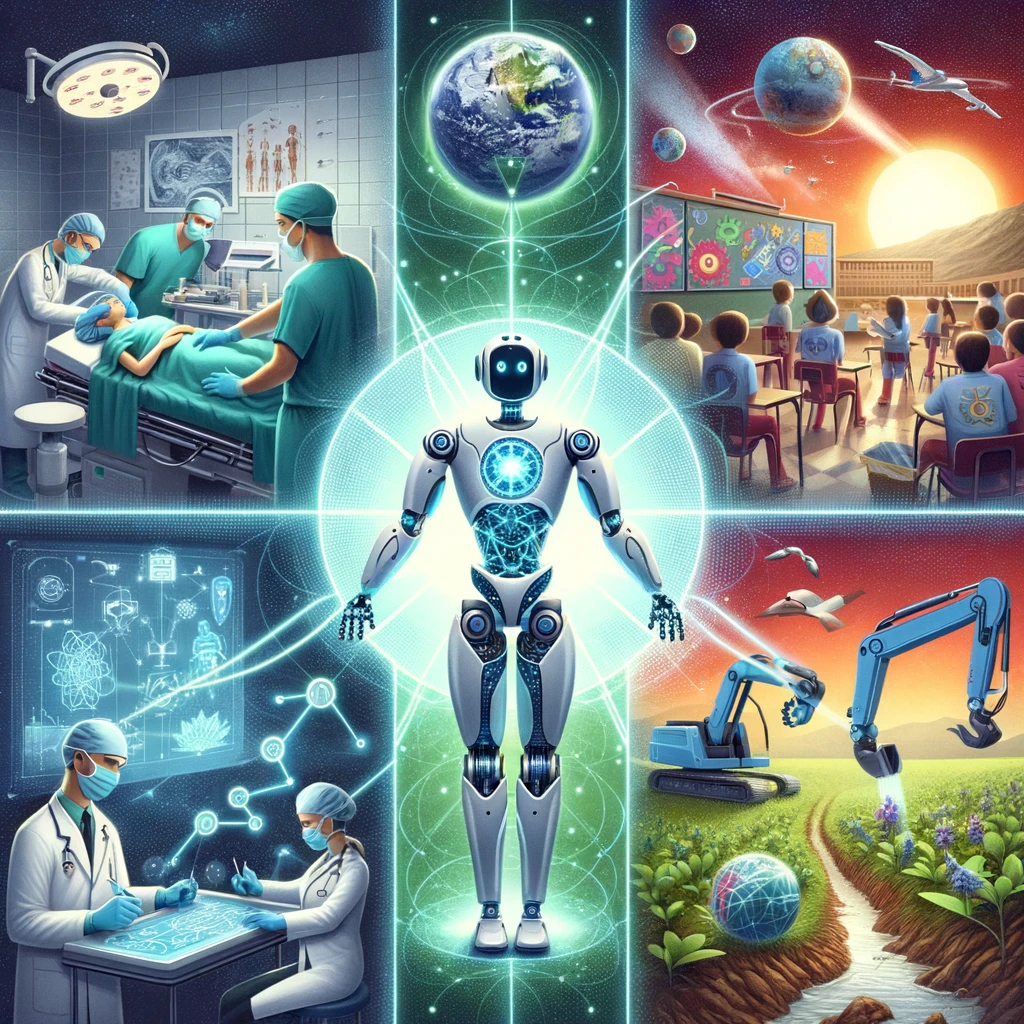
Combining AI with robotics has a profound impact on industries, healthcare, services, and everyday life.
It makes robotic systems more efficient, flexible, and effective, allowing them to perform a wider range of tasks, from precision manufacturing to caregiving.
• Enhanced Autonomy: AI lets robots operate independently in changing environments, making real-time decisions without human input.
• Improved Efficiency and Productivity: In industries, AI-powered robots can optimize production lines, reduce errors, and handle complex tasks, increasing productivity and saving costs.
• New Possibilities: With AI, robotics can be used in new areas like deep-sea exploration, disaster response, and personalized healthcare, solving previously impossible challenges.
The fusion of AI and robotics is more than just a technological advancement; it represents a fundamental change in how we interact with machines and envision their role in society.
As we explore the history, core technologies, applications, and challenges of AI in robotics, we see its transformative potential.
AI in robotics is leading to innovations that promise to reshape industries, enhance human capabilities, and tackle some of the world’s most pressing problems.
2. Historical Evolution of AI in Robotics
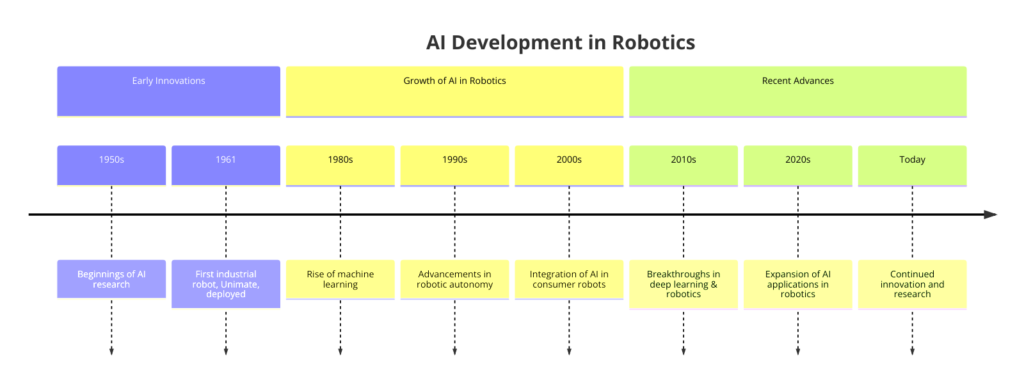
Integrating AI into robotics has transformed automation and intelligent machinery.
This section explores the key milestones and breakthroughs that have made robots more autonomous, adaptable, and capable of complex decision-making.
From Automated Machines to Intelligent Robots
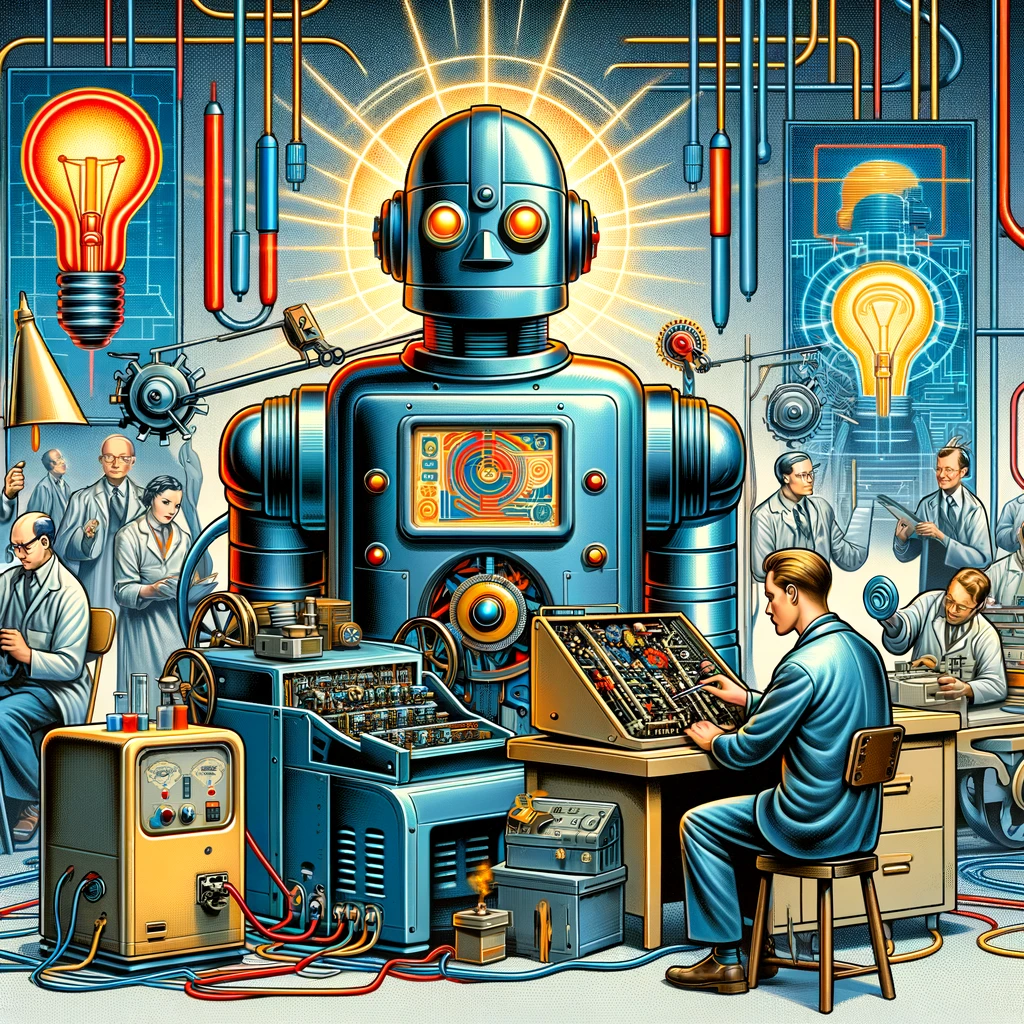
Robotics started in the early 20th century with simple automated machines designed for specific tasks.
These early robots couldn’t adapt or make decisions based on environmental changes.
The real turning point came with the advent of computational technologies and the concept of AI, laying the groundwork for integrating intelligence into robots.
• 1950s and 60s: The dawn of AI research introduced the idea of machines mimicking human intelligence. Early experiments, like the Logic Theorist and Shakey the robot, showed that machines could perform reasoning tasks and navigate environments.
• 1970s and 80s: Significant advancements in computer vision and sensor technology occurred. The introduction of microprocessors and algorithms for pattern recognition and object detection enabled robots to interact more effectively with their surroundings.
• 1990s to Present: The explosion of machine learning and deep learning has dramatically enhanced AI capabilities in robotics. Autonomous vehicles and humanoid robots like ASIMO and Atlas can learn from data, improve through experience, and execute tasks with precision and autonomy.
Key Milestones and Breakthroughs in Robotic Intelligence
• Deep Learning Revolution: The resurgence of neural networks, especially deep learning, has propelled advancements in robotic perception and interaction.
• Reinforcement Learning: Robots learn to make decisions by trial and error, opening new avenues for robotic autonomy and adaptability.
• Human-Robot Interaction: Advances in natural language processing (NLP) and affective computing have led to more natural interactions between humans and robots.
The historical evolution of AI in robotics showcases the relentless pursuit of innovation, pushing the boundaries of what machines can do.
From early automated machines to today’s intelligent robots capable of learning, adapting, and collaborating, the journey of AI in robotics reflects the convergence of multiple disciplines and the power of human ingenuity.
As we continue to explore and expand the capabilities of AI-driven robotics, historical lessons serve as both inspiration and a foundation for future advancements.
3. Core Technologies Behind AI in Robotics
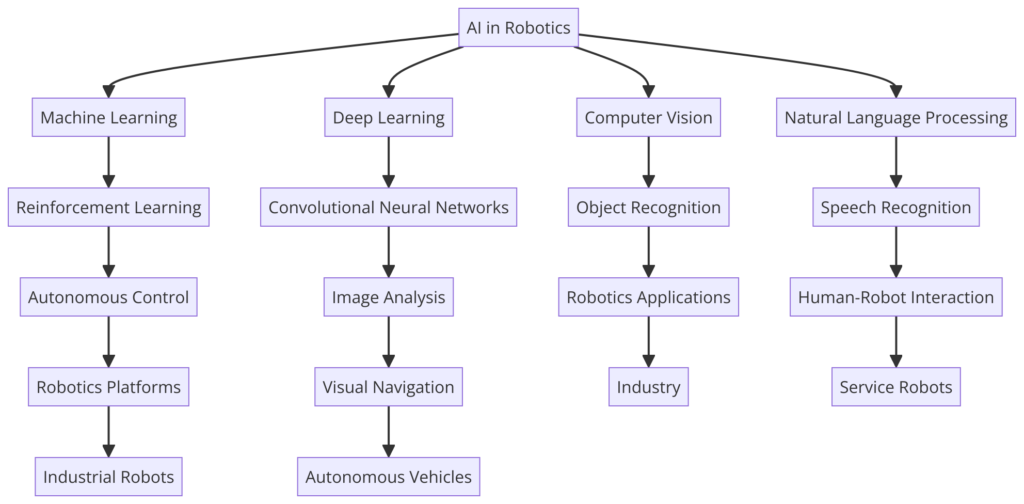
The integration of AI into robotics has been made possible by developing core technologies that enhance robotic perception, decision-making, and learning capabilities.
These technologies empower robots to interpret and interact with their environment in sophisticated ways.
Machine Learning in Robotics
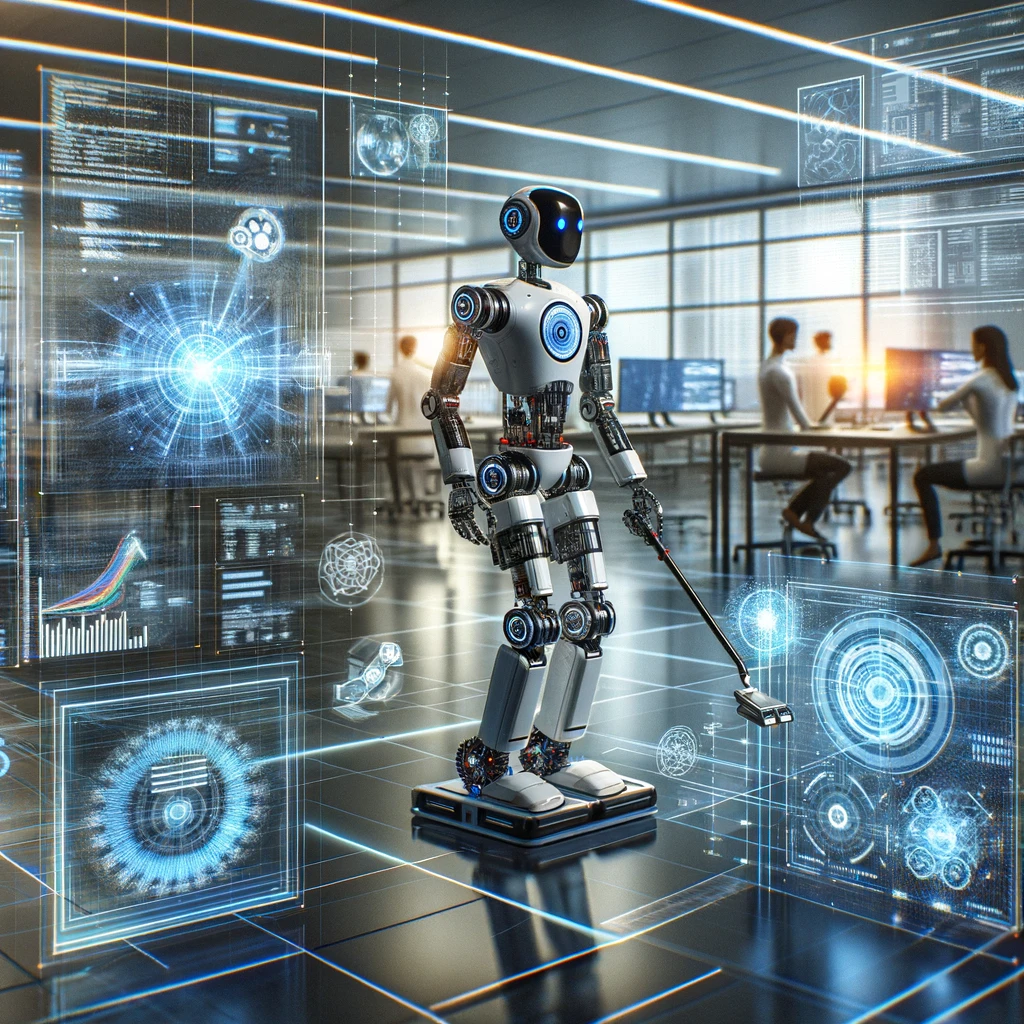
Machine learning is the backbone of AI in robotics, providing algorithms and models that enable robots to learn from data and experience.
• Supervised Learning: Robots learn specific responses to given inputs, like object recognition or gesture interpretation, by training on labeled datasets.
• Unsupervised Learning: Robots identify patterns and structures in data without predefined labels, useful for exploring complex environments.
• Reinforcement Learning: Robots learn optimal strategies through trial and error, crucial for dynamic tasks like robotic manipulation or autonomous navigation.
Computer Vision in Robotics
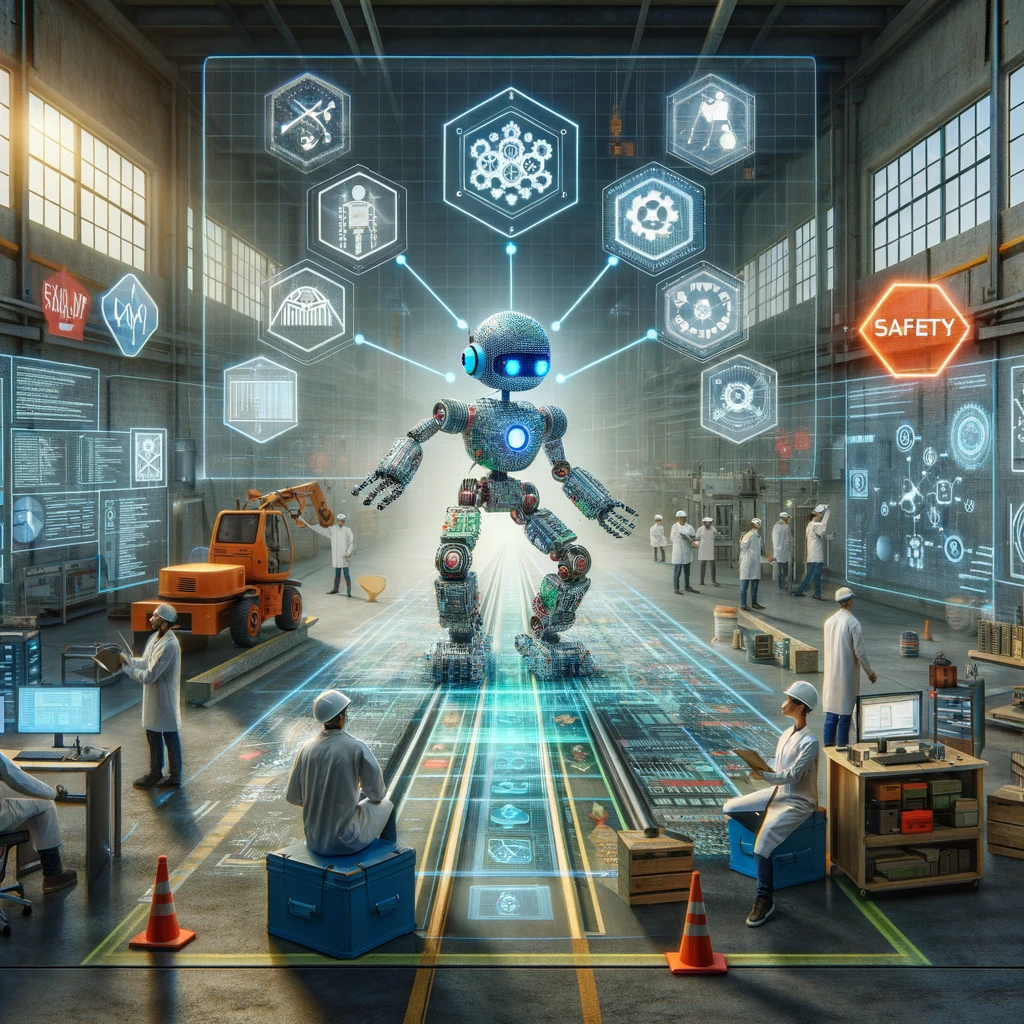
Computer vision allows robots to process and interpret visual information from the real world, mimicking human visual perception.
• Image and Video Analysis: Algorithms detect, classify, and track objects or features, enabling precise navigation and object manipulation.
• 3D Reconstruction: Techniques like simultaneous localization and mapping (SLAM) and stereo vision help robots construct detailed 3D maps of their surroundings.
Sensor Technologies in Robotics
Sensors allow robots to sense their environment and collect data crucial for perception and decision-making.
• Lidar and Radar: These offer precise distance measurement, widely used in autonomous vehicles for obstacle detection and navigation.
• Tactile Sensors: Mimic the sense of touch, providing detailed information about the texture, temperature, and shape of objects.
• Sensor Fusion: Combining data from multiple sensors gives robots a comprehensive understanding of their environment, improving accuracy and reliability.
Role of AI in Enhancing Robotic Capabilities
AI technologies make robots more autonomous, versatile, and efficient.
Machine learning helps robots learn from experience, computer vision gives them the ability to see and understand the world, and sensor technologies enhance their perception and interaction capabilities.
The core technologies behind AI in robotics—machine learning, computer vision, and sensors—form the foundation of robotic intelligence.
These technologies enable machines to perceive, understand, and interact with the world in unprecedented ways.
As these technologies evolve and work together, the future of robotics promises even greater autonomy and capabilities, further blurring the lines between human and machine abilities.
4. AI Applications in Robotics

The combination of AI and robotics has led to intelligent systems capable of performing tasks across various domains with unprecedented efficiency and adaptability.
AI-powered robots are transforming operations, enhancing productivity, and opening new avenues for innovation.
Manufacturing and Industrial Automation

AI-enabled robots have revolutionized manufacturing, offering precision, speed, and flexibility.
They can identify defects, optimize assembly processes, and adapt to changes in production requirements without manual reprogramming.
Case Study: Automotive manufacturers use AI robots for tasks like welding, painting, assembly, and quality inspection, reducing errors and increasing production rates.
Healthcare and Medical Assistance
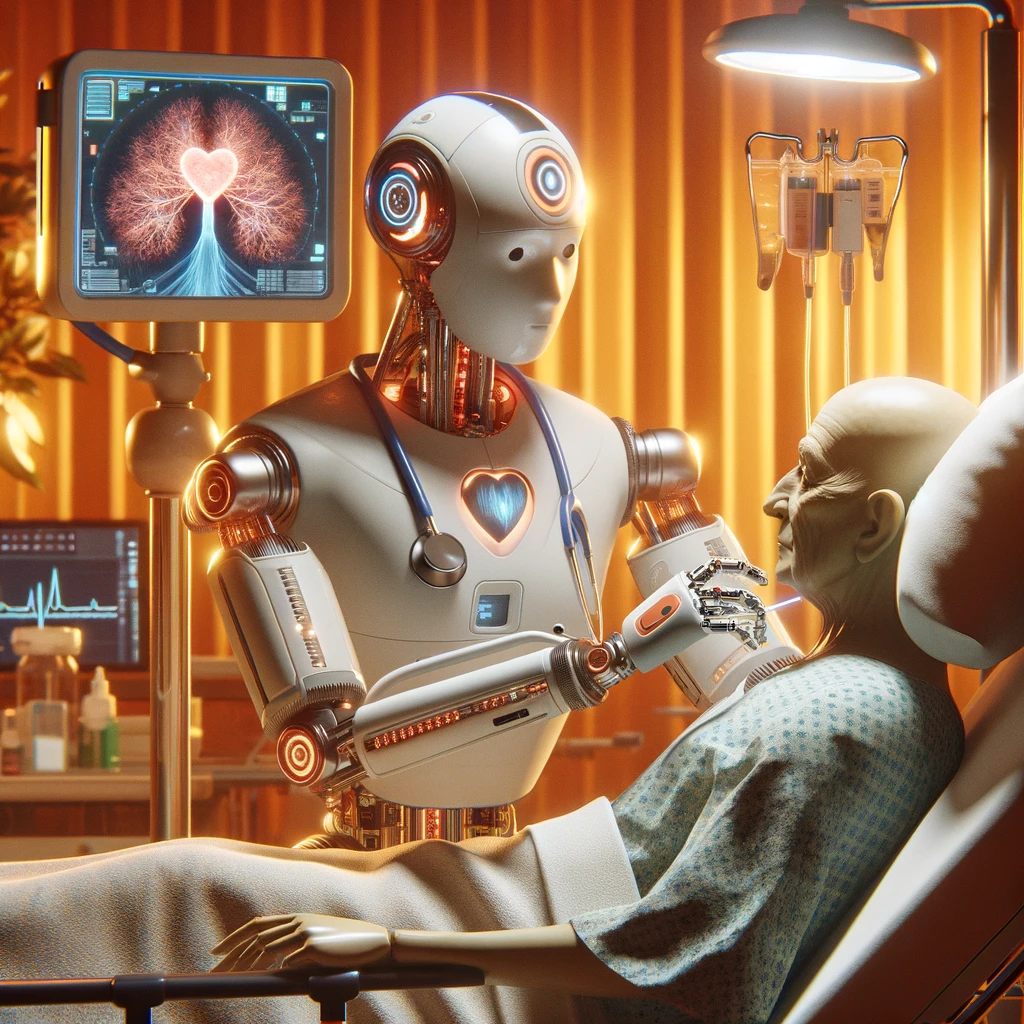
AI in robotics has made significant strides in healthcare, supporting surgery, rehabilitation, and patient care.
Guided by AI, surgical robots can perform complex procedures with high precision and minimal invasiveness.
Rehabilitation robots assist patients in recovery with personalized therapy routines, while hospital service robots deliver supplies and monitor patients.
- Case Study: The da Vinci Surgical System enables surgeons to perform delicate operations through tiny incisions controlled by AI-assisted robotic arms that filter out hand tremors and enhance precision.
Service Robots in Retail and Hospitality
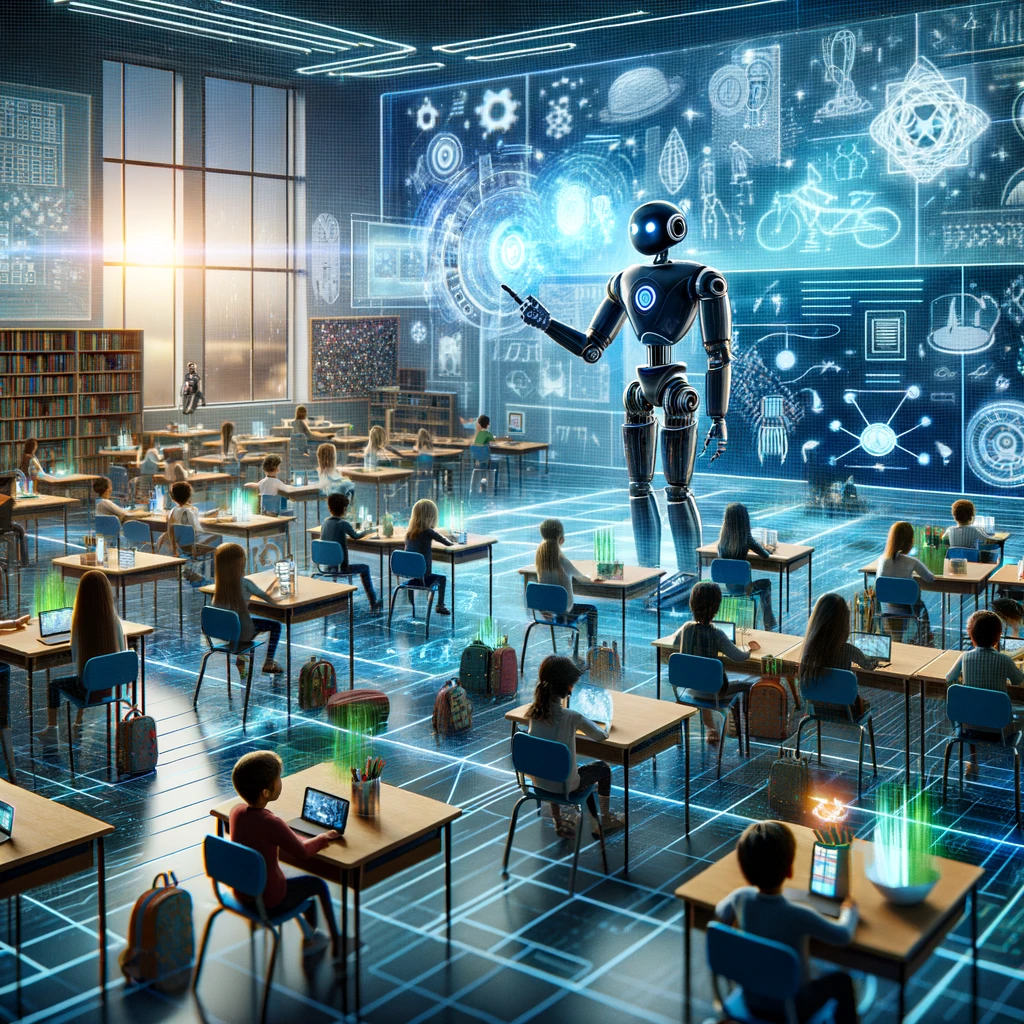
AI-powered service robots are increasingly used in retail and hospitality to improve customer experiences.
These robots can greet customers, guide them to products or locations, and even handle check-ins and food service in hotels and restaurants.
- Case Study: In some airports and shopping centers, AI-powered robots assist visitors with navigation, provide information, and carry luggage, enhancing the overall customer service experience.
Exploration and Environmental Monitoring
AI robots perform tasks in hazardous or inaccessible conditions, such as deep-sea exploration or space missions. They collect data on ecosystems, track wildlife, and monitor environmental changes.
Case Study: NASA’s Mars rovers, like Perseverance, use AI to navigate the Martian terrain autonomously, conduct experiments, and search for signs of past life.
The applications of AI in robotics are vast and continually expanding, demonstrating the transformative potential of integrating intelligent algorithms with robotic systems.
AI-enabled robots enhance capabilities, improve outcomes, and address challenges across industries and societal functions.
As technology advances, the synergy between AI and robotics will continue to drive innovation and inspire new ways to improve work, healthcare, exploration, and everyday life.
5. Challenges and Ethical Considerations in AI Robotics

Integrating AI into robotics has led to innovation and efficiency across many areas.
However, this rapid advancement brings technical, ethical, and societal challenges that must be addressed responsibly.
Technical Challenges in AI Robotics
• Complexity and Reliability: Designing complex and reliable AI systems for robotics is challenging. Robots must operate in unpredictable environments, requiring robust AI that can adapt to variability without compromising safety or performance.
• Integration of Systems: Integrating AI with mechanical and electronic systems in robotics presents engineering challenges. Ensuring seamless communication and functionality is crucial for effective operation.
• Data and Privacy: AI robots rely on vast amounts of data for training and operation, raising concerns about data privacy and security. Protecting personal and sensitive information is essential.
Ethical and Societal Considerations
• Job Displacement: AI robots may displace human workers in manufacturing, retail, and service industries. Addressing job displacement and exploring workforce re-skilling are essential.
• Autonomy and Control: As robots become more autonomous, questions arise about control, accountability, and ethical use. Establishing guidelines for developing and using autonomous robots is critical.
• Bias and Fairness: AI systems can inherit biases from their training data, leading to unfair outcomes. Developing AI robotics to mitigate biases and promote fairness is crucial, especially in law enforcement, hiring, and healthcare applications.
Addressing Challenges and Promoting Ethical Use
• Transparent Development: Promoting transparency in the development and operation of AI robotics helps build trust and allows for scrutiny to ensure ethical standards are met.
• Regulatory Frameworks: Creating comprehensive regulatory frameworks is essential to guide the ethical development, deployment, and use of AI robots. These frameworks should address concerns related to safety, privacy, accountability, and societal impact.
• Stakeholder Engagement: Engaging a broad range of stakeholders, including ethicists, policymakers, industry leaders, and the public, is crucial to understanding diverse perspectives and values in the development and application of AI robotics.
The challenges and ethical considerations in AI robotics highlight the complexity of integrating advanced technologies into society.
Addressing these issues requires a multidisciplinary approach that balances innovation with responsibility, ensuring that AI robots are developed and deployed in ways that benefit humanity and reflect ethical principles.
Ongoing dialogue, regulation, and collaboration are vital for navigating the moral landscape of AI robotics and responsibly realizing their transformative potential.
6. The Future of AI in Robotics
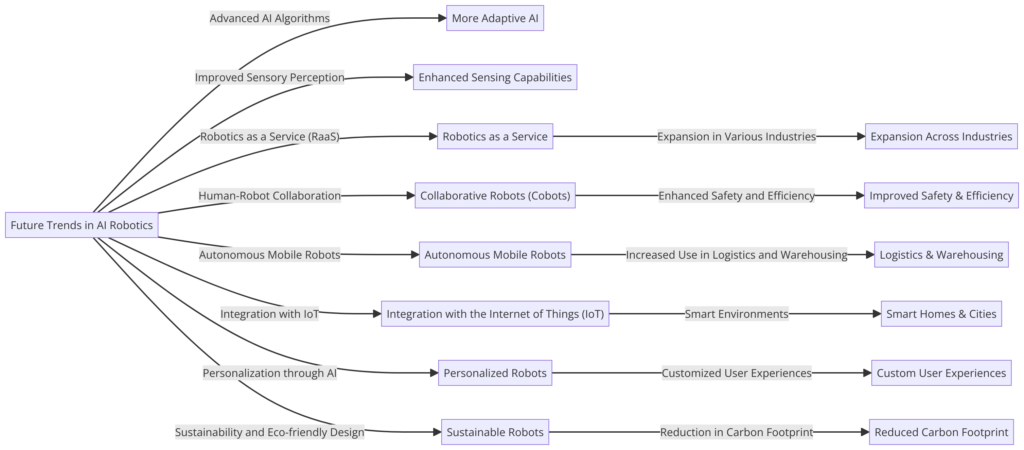
The intersection of AI and robotics is a dynamic and promising area of technological advancement.
As AI continues to evolve, its integration into robotics promises a future where intelligent machines augment human capabilities and open new frontiers in exploration, innovation, and interaction.
Predictions for Future Advancements in AI Robotics
• Enhanced Cognitive Capabilities: Future AI robots are expected to have advanced cognitive abilities, including a better understanding of natural language, more nuanced interpretation of environmental contexts, and stronger problem-solving skills. These advancements will enable robots to perform more complex tasks autonomously and interact with humans more naturally and effectively.
• Greater Physical and Mechanical Sophistication: Technological advancements will lead to robots with enhanced physical and mechanical capabilities, allowing for more precise movements, greater strength, and improved agility. This will expand their utility in areas requiring fine motor skills, such as surgery, or in challenging environments, like disaster sites or extraterrestrial exploration.
• Increased Collaboration Between Humans and Robots: As AI robots become more intelligent and adaptable, there will be a shift towards more collaborative human-robot interactions. Robots will not only assist humans in tasks but also work alongside them as partners, learning from human input and feedback to improve their performance and adapt to changing needs.
Potential New Applications
• Personalized Education and Training: AI robots could provide customized education and training, adapting teaching methods and materials to fit each individual’s learning style and pace, making education more accessible and effective.
• Advanced Healthcare Services: In healthcare, AI robots can perform more complex surgeries with high precision, provide care for the elderly or those with disabilities, and offer personalized rehabilitation services.
• Environmental Conservation: AI robots could play a crucial role in environmental monitoring and conservation efforts, collecting data on ecosystems, tracking wildlife, and even performing tasks to restore and protect natural habitats.
The Evolving Relationship Between Humans and Robots
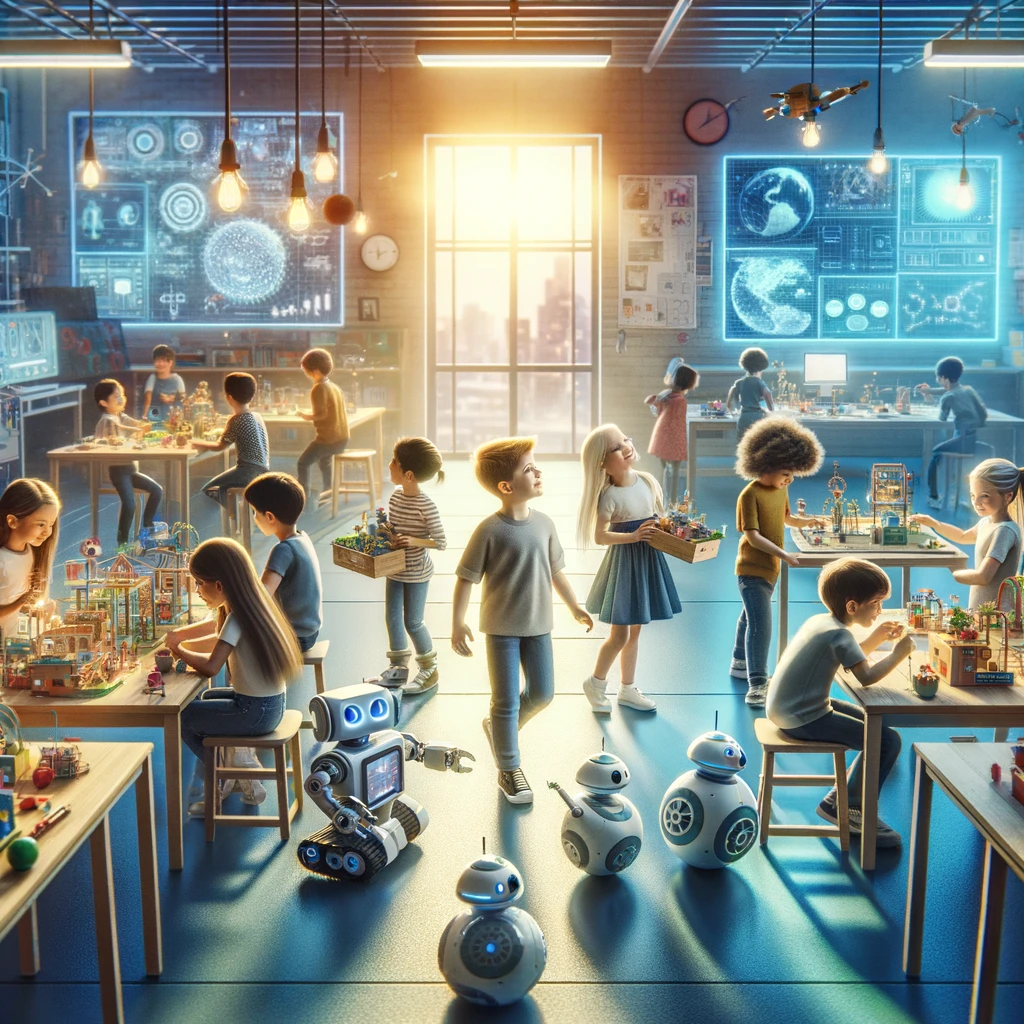
As AI in robotics advances, the relationship between humans and robots will continue to evolve, moving towards a future where robots are seen not just as tools but as integral components of society.
This shift will raise important questions about ethics, trust, and the social role of robots.
Ensuring that this relationship benefits society as a whole will require careful consideration of the implications of AI robotics for employment, privacy, and human interaction.
The future of AI in robotics promises a time filled with innovation, offering new possibilities for augmenting human capabilities, addressing global challenges, and enhancing daily life.
As we navigate this future, it will be crucial to foster advancements that are ethical, responsible, and aligned with human values, ensuring that the benefits of AI robotics are accessible to all.
The journey ahead for AI in robotics is not just about technological breakthroughs but also about shaping a future where technology amplifies the best of human potential.
7. Conclusion: Reflecting on the Transformative Impact of AI in Robotics

Exploring AI in robotics reveals a field brimming with potential, poised to redefine technology, innovation, and human-machine interaction.
From the earliest automated machines to today’s sophisticated, intelligent robots, AI has propelled robotics into new eras of possibility.
This concluding section reflects on the transformative impact of AI in robotics, highlighting its importance and considering the future direction and societal implications of this dynamic field.
The Transformative Role of AI in Robotics
AI has transformed robotics from simple, programmable entities into dynamic systems capable of learning, adapting, and making decisions.
This evolution has enabled robots to undertake tasks with autonomy and sophistication previously unimaginable, impacting industries from manufacturing to healthcare and beyond.
Integrating AI into robotics has enhanced operational efficiency and productivity and opened avenues for addressing complex global challenges, such as environmental conservation, disaster response, and accessible healthcare.
The Importance of AI in Robotics
The significance of AI in robotics lies in its ability to imbue machines with a semblance of intelligence, bridging the gap between mechanical action and cognitive processing.
This fusion has led to the development of robots that can perceive their environment, understand human language, and even exhibit social behaviors.
This marks a leap forward in our quest to create machines that can work alongside humans as assistants, caregivers, and collaborators.
Future Directions and Societal Implications
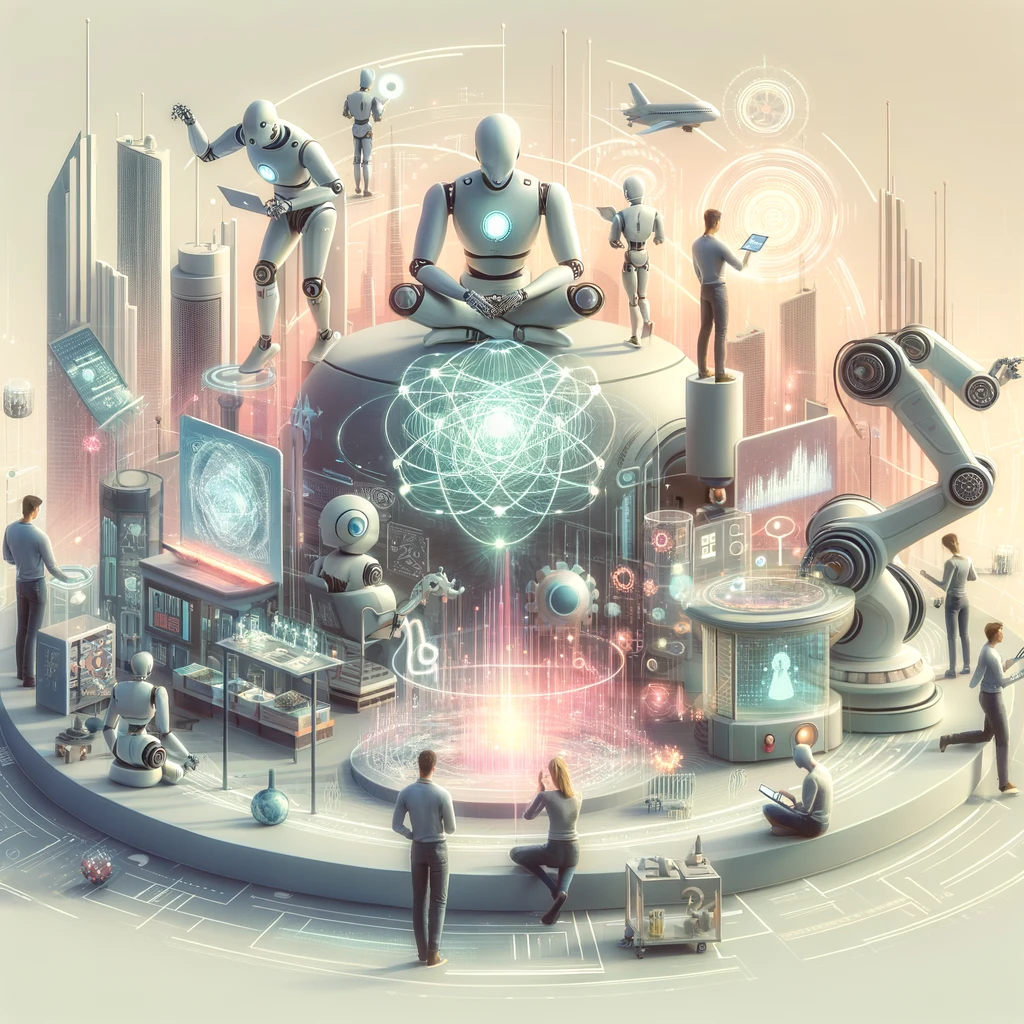
As AI and robotics advance, the future promises even more sophisticated interactions between humans and machines. AI-powered robots have immense potential to augment human capabilities, enhance the quality of life, and solve pressing societal issues.
However, this future also necessitates careful consideration of ethical, legal, and social implications, including concerns about privacy, security, employment, and the moral status of intelligent machines.
The development of AI in robotics calls for a multidisciplinary approach, blending technical innovation with insights from ethics, sociology, and policy-making to ensure that the benefits of robotic advancements are realized ethically and equitably.
Engaging a broad range of stakeholders, from technologists and ethicists to end-users and policymakers, will be crucial in navigating the complexities of this evolving time.
The journey of AI in robotics is a testament to human ingenuity and the relentless pursuit of progress, offering a glimpse into a future where intelligent machines enhance human potential in ways yet to be fully realized.
As we stand on the brink of this new era, the importance of responsible development and use of AI in robotics cannot be overstated.
By fostering innovation guided by ethical principles and aimed at serving the common good, we can ensure that the transformative impact of AI in robotics leads to a future that benefits all of humanity.
FAQ & Answers
1. What is AI in Robotics?
AI in robotics refers to the incorporation of artificial intelligence technologies to enable robots to make decisions, learn, and adapt to new situations autonomously.
2. How is AI transforming the robotics industry?
AI enhances robotic capabilities in perception, decision-making, and learning, leading to more efficient, flexible, and intelligent robots across various applications.
Quizzes
Quiz 1: “AI Robotics Technologies”
Test your knowledge on the AI technologies that power modern robotics with this engaging quiz. Whether you’re a robotics enthusiast, a student of AI, or just curious about how machines learn to navigate our world, this quiz is for you. Let’s see how much you know!
- What is Machine Learning?
- A) The process of teaching a computer to play chess.
- B) A subset of AI that focuses on building systems that learn from data.
- C) Programming robots to perform tasks without human intervention.
- D) A type of robot that can perform tasks in industrial settings.
- Which of the following is a primary application of robotics in AI?
- A) Data entry
- B) Autonomous vehicles
- C) Spell check in word processing software
- D) Online ad placement
- What does ‘neural network’ refer to in the context of AI and robotics?
- A) A communication system between robots.
- B) A computer network designed to mimic the human brain.
- C) A series of algorithms that simulate the human brain to recognize patterns.
- D) The main processor within a robot.
- In robotics, what is computer vision used for?
- A) To give robots the ability to see, identify and process images.
- B) To project images from a robot to a computer screen.
- C) To improve the screen resolution of computers used in robotics.
- D) To create visual effects in movies.
- What is reinforcement learning?
- A) A technique where the robot learns through trial and error, receiving rewards for correct actions.
- B) A method of programming where robots are reinforced with steel to prevent damage.
- C) A learning process involving repeating the same task until it is executed perfectly.
- D) The process of teaching robots to reinforce human learning.
- Which of the following best describes the role of sensors in robotics?
- A) Sensors are only used for detecting light.
- B) Sensors provide robots with data about their environment, helping them to interact effectively.
- C) Sensors are decorative components that make robots look more sophisticated.
- D) Sensors are used to increase the speed of robots.
- What is the significance of ROS (Robot Operating System) in robotics?
- A) It’s the only operating system that can be used in robots.
- B) It provides a set of software frameworks for robot software development.
- C) It is a hardware component necessary for all robotic operations.
- D) It is a security system designed to protect robots from viruses.
- Which technology enables robots to navigate and understand their surroundings?
- A) Bluetooth technology
- B) GPS tracking
- C) SLAM (Simultaneous Localization and Mapping)
- D) Wi-Fi connectivity
- What role does AI play in the development of autonomous robots?
- A) AI technology is irrelevant to the development of autonomous robots.
- B) AI is used only for enhancing the physical appearance of robots.
- C) AI provides robots with the ability to learn from their environment and make decisions.
- D) AI is used to reduce the cost of robot production.
- How does deep learning differ from traditional machine learning in the context of robotics?
- A) Deep learning requires less data to learn.
- B) Deep learning is a simpler process, making it easier to implement in robots.
- C) Deep learning can process and learn from unstructured data through layers of algorithms.
- D) There is no difference; deep learning and machine learning are the same.
Answers:
- B) A subset of AI that focuses on building systems that learn from data.
- B) Autonomous vehicles
- C) A series of algorithms that simulate the human brain to recognize patterns.
- A) To give robots the ability to see, identify and process images.
- A) A technique where the robot learns through trial and error, receiving rewards for correct actions.
- B) Sensors provide robots with data about their environment, helping them to interact effectively.
- B) It provides a set of software frameworks for robot software development.
- C) SLAM (Simultaneous Localization and Mapping)
- C) AI provides robots with the ability to learn from their environment and make decisions.
- C) Deep learning can process and learn from unstructured data through layers of algorithms.
How did you do? Whether you aced it or found some surprises, there’s always more to explore in the fascinating world of AI robotics technologies!
Quiz 2: “Famous Robots”
Dive into the world of famous robots and discover the role of artificial intelligence (AI) in these groundbreaking implementations across various industries. From healthcare to entertainment, AI’s integration into robotics has revolutionized the way we interact with technology. Test your knowledge and see how well you know these famous robots and their AI capabilities.
- Sophia the Robot is known for:
- A) Assisting in surgical operations.
- B) Being a social humanoid robot capable of displaying human-like expressions and interacting with people.
- C) Competing in robot fighting leagues.
- D) Manufacturing automobiles.
- ASIMO, developed by Honda, is primarily designed for:
- A) Playing chess at competitive levels.
- B) Assisting astronauts in space missions.
- C) Assisting people with reduced mobility and performing tasks in household environments.
- D) Deep sea exploration.
- Boston Dynamics’ Spot is a robot that:
- A) Is used for pet companionship in households.
- B) Performs stand-up comedy routines.
- C) Is utilized for tasks in challenging or dangerous environments, like inspections and data collection.
- D) Serves food in restaurants.
- Which of the following is true about the Mars Rover (such as Curiosity)?
- A) It is used for deep sea floor mapping.
- B) It is primarily a combat robot used in military operations.
- C) It explores the surface of Mars, conducting various scientific experiments and sending data back to Earth.
- D) It performs live music concerts for entertainment.
- KUKA Robotics is renowned for its robots that are used in:
- A) Only in the healthcare sector for patient care.
- B) The entertainment industry for creating special effects.
- C) Manufacturing and industrial automation, performing tasks like assembly, welding, and painting.
- D) Personal fitness and gym coaching.
- iRobot’s Roomba is a popular example of a robot that:
- A) Plays and teaches chess.
- B) Provides security surveillance for homes.
- C) Performs vacuum cleaning in homes, navigating and adapting to different spaces autonomously.
- D) Acts in movies and TV shows.
- Pepper, developed by SoftBank Robotics, is designed to:
- A) Detect and extinguish fires.
- B) Serve as a companion robot, recognizing human emotions and engaging with people through conversation and its touchscreen.
- C) Explore the depths of oceans.
- D) Harvest crops in agriculture.
- Da Vinci Surgical System is used for:
- A) Exploring hazardous environments and defusing bombs.
- B) Performing precise surgical operations, enhancing a surgeon’s capabilities with greater flexibility and control.
- C) Conducting orchestras.
- D) Cleaning large commercial buildings.
- Robonaut, developed by NASA, is intended to:
- A) Assist astronauts in space by performing tasks that are dangerous or beyond human capabilities.
- B) Teach mathematics and science in schools.
- C) Act as a tour guide in museums.
- D) Compete in robot soccer leagues.
- The AI in Amazon’s warehouse robots primarily helps them to:
- A) Write and publish books.
- B) Navigate warehouses efficiently, picking and sorting products to streamline the fulfillment process.
- C) Cook and deliver food in cafeterias.
- D) Provide customer service through voice recognition.
Answers:
- B) Being a social humanoid robot capable of displaying human-like expressions and interacting with people.
- C) Assisting people with reduced mobility and performing tasks in household environments.
- C) Is utilized for tasks in challenging or dangerous environments, like inspections and data collection.
- C) It explores the surface of Mars, conducting various scientific experiments and sending data back to Earth.
- C) Manufacturing and industrial automation, performing tasks like assembly, welding, and painting.
- C) Performs vacuum cleaning in homes, navigating and adapting to different spaces autonomously.
- B) Serve as a companion robot, recognizing human emotions and engaging with people through conversation and its touchscreen.
- B) Performing precise surgical operations, enhancing a surgeon’s capabilities with greater flexibility and control.
- A) Assist astronauts in space by performing tasks that are dangerous or beyond human capabilities.
- B) Navigate warehouses efficiently, picking and sorting products to streamline the fulfillment process.
How well did you score? These questions shed light on the incredible variety and depth of AI integration into robotics, demonstrating just how much these technologies have become woven into the fabric of various industries.

